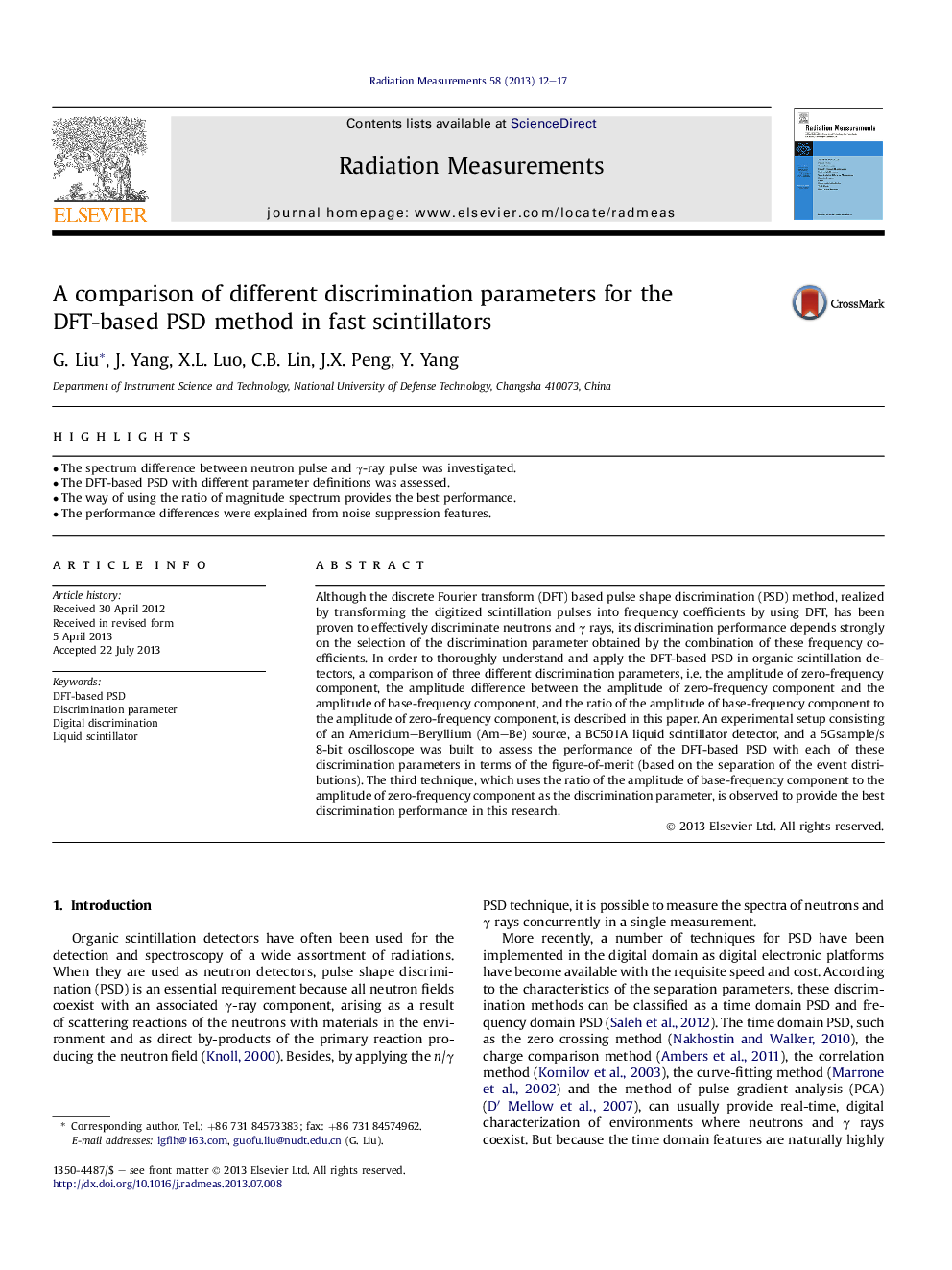| کد مقاله | کد نشریه | سال انتشار | مقاله انگلیسی | نسخه تمام متن |
|---|---|---|---|---|
| 1884979 | 1533432 | 2013 | 6 صفحه PDF | دانلود رایگان |

• The spectrum difference between neutron pulse and γ-ray pulse was investigated.
• The DFT-based PSD with different parameter definitions was assessed.
• The way of using the ratio of magnitude spectrum provides the best performance.
• The performance differences were explained from noise suppression features.
Although the discrete Fourier transform (DFT) based pulse shape discrimination (PSD) method, realized by transforming the digitized scintillation pulses into frequency coefficients by using DFT, has been proven to effectively discriminate neutrons and γ rays, its discrimination performance depends strongly on the selection of the discrimination parameter obtained by the combination of these frequency coefficients. In order to thoroughly understand and apply the DFT-based PSD in organic scintillation detectors, a comparison of three different discrimination parameters, i.e. the amplitude of zero-frequency component, the amplitude difference between the amplitude of zero-frequency component and the amplitude of base-frequency component, and the ratio of the amplitude of base-frequency component to the amplitude of zero-frequency component, is described in this paper. An experimental setup consisting of an Americium–Beryllium (Am–Be) source, a BC501A liquid scintillator detector, and a 5Gsample/s 8-bit oscilloscope was built to assess the performance of the DFT-based PSD with each of these discrimination parameters in terms of the figure-of-merit (based on the separation of the event distributions). The third technique, which uses the ratio of the amplitude of base-frequency component to the amplitude of zero-frequency component as the discrimination parameter, is observed to provide the best discrimination performance in this research.
Journal: Radiation Measurements - Volume 58, November 2013, Pages 12–17